View in other NatureServe Network Field Guides
NatureServe
Montana
Utah
Wyoming
Idaho
Wisconsin
British Columbia
South Carolina
Yukon
California
New York
Hemlock Looper Moth - Lambdina fiscellaria
General Description
The adult Hemlock Looper Moth (
Lambdina fiscellaria) is a thinly scaled mid-sized geometrid. Its antennae has very long pectinations resulting in a conspicuously feathery antenae. The ground color varies from tan to brown with dark AM and PM lines. The PM lines ar bordered distally with orange-brown. The discal spots are obscure (Anweiler 2004 and Schmidt 2003).
The larvae has a brownish and grayish body with spotted head and with many longitudinal lines and stripes. Its gray head has small brown and large black spots. It has a gray prothoracic shield with yellowish patches and dark spots, and grayish brown thoracic legs. The larvae has a mostly brownish gray dorsum with an indistinct, gray middorsal stripe trimmed in lighter gray, and four black dorsal spots on each segment. There is a grayish white subdorsal stripe tinted with dark yellow near hind margin of the segments. There are many grayish, brownish, or blackish longitudinal lines and stripes below subdorsal stripe. There is a large grayish spot above black spiracles on some segments, and a grayish white venter with several dark longitudinal lines. The larvae is a "looper" and has no prolegs except on segments 6 and 10. The length of the larvae is 25 to 30 mm (Maier 2004).
Phenology
The Hemlock Looper Moth has one generation a year. The female lays her tiny eggs on mosses and lichens on understory vegetation and tree limbs (Powell and Opler 2009). Young larvae eat only new foliage, mature larvae eat older foliage. Eggs overwinter on tree trunks, laid on bark lichens or moss. The Hemlock Looper is an important forest pest, and can cause severe defoliation of conifers (Anweiler 2004 and Schmidt 2003).
Diagnostic Characteristics
L. fiscellaria is similar to Besma species, but L. fiscellaria lacks the scalloped subterminal line of besma, and flies in the fall, not in early summer (Anweiler 2004 and Schmidt 2003).
Range Comments
The Hemlock Looper Moth is native to North America. It occurs from British Columbia east across Canada to Newfoundland and Nova Scotia, then south to California, Idaho, Montana, and northern Colorado. It ranges in the east to Wisconsin and Pennsylvania (Powell and Opler 2009).
Observations in Montana Natural Heritage Program Database
Number of Observations: 13
(Click on the following maps and charts to see full sized version)
Map Help and Descriptions
Relative Density
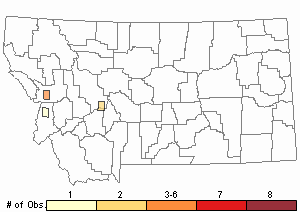
Recency
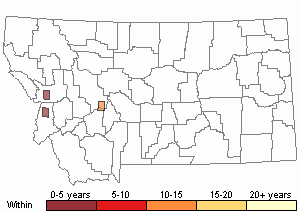
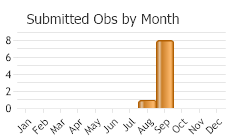
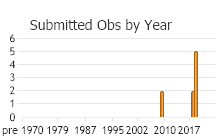
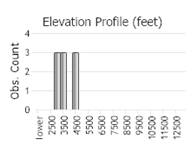 (Observations spanning multiple months or years are excluded from time charts)
(Observations spanning multiple months or years are excluded from time charts)
Food Habits
The preferred host is
western hemlock, although Sitka spruce, Pacific silver fir,
Douglas-fir and associated understory vegetation may be defoliated by this insect. The larvae can be extremely destructive to
hemlock, balsam fir, and
white spruce. During an outbreak it will also feed on many other species including:
larch, red and black spruce,
western red cedar, jack pine, yellow and
paper birch, basswood,
maple,
elm, and
wild cherry.
High populations can remove nearly all the new and old needles in a single season. The larvae feed initially on new foliage but quickly move to old foliage. They return to the new foliage only when the old foliage is depleted. The Hemlock Looper Moth is a wasteful feeder, often nipping only a small part of a needle before moving to another. As these needles dry out they change color and along with the exposed twigs, result in a reddish-brown color characteristic of an infested stand. Often a mat of clipped needles collects under the tree. Hemlocks may die after one year of severe defoliation, fir in one or two years.
Stewardship Responsibility
References
- Literature Cited AboveLegend:
 View Online Publication
View Online Publication Maier, C.T. 2004. Caterpillars on the foliage of conifers in the Northeastern United States. USDA Forest Service, Forest Health Technology Enterprise Team.
Maier, C.T. 2004. Caterpillars on the foliage of conifers in the Northeastern United States. USDA Forest Service, Forest Health Technology Enterprise Team. Powell, J.A. and P.A. Opler. 2009. Moths of Western North America. University of California Press, Berkeley, CA. 369 pp.
Powell, J.A. and P.A. Opler. 2009. Moths of Western North America. University of California Press, Berkeley, CA. 369 pp.
- Web Search Engines for Articles on "Hemlock Looper Moth"
- Additional Sources of Information Related to "Insects"





